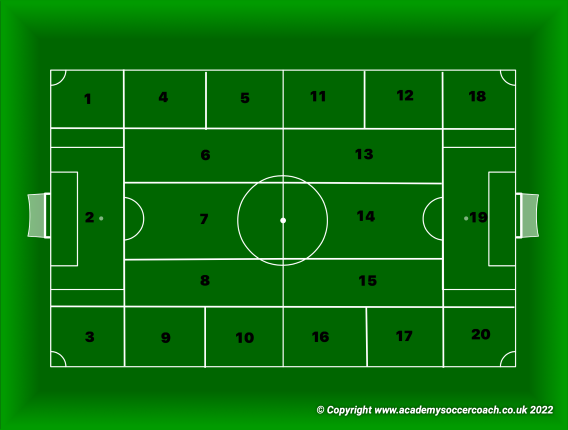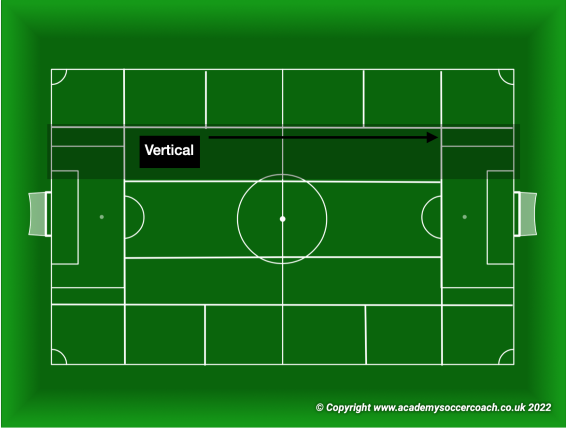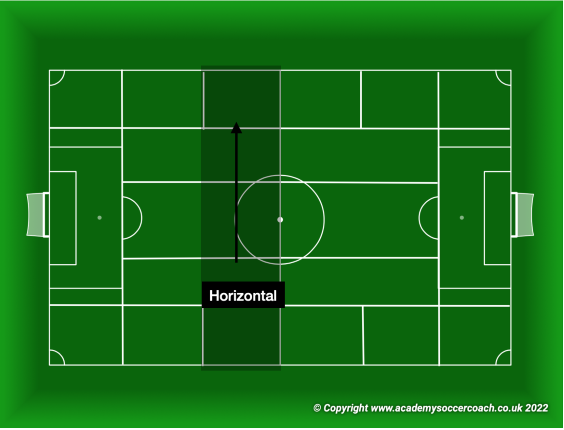By Soren Schamberg
During the last few seasons of the EPL, Manchester City has been known for playing a innovative 20 zone system. While the idea of breaking a pitch down into areas of play to train what to do in certain situations is similar to the 18 zone system, that’s where the similarities end.
To highlight the benefits of the 20 zone system, it is first important to know how the zones are laid out, as shown below:

The most noticeable difference is the creation of what are called “half-spaces” in areas 6,7,8,13,14 & 15 and the combining of the two areas in front of goal - 2 & 19. The outlying channels are referred to as “limited option” areas.
The reason behind this layout is to form a system of positional play that helps get in between the oppositions lines high up the pitch and gain a numerical advantage. This allows a team to dominate possession of the ball in dangerous areas, manipulate the oppositions defense and create high quality chances in front of goal.
Compared to the 18 zone system, this layout will allow for more creative play because it reduces the need for players with the ball to scan the field looking for the next pass or space in the oppositions formation by the players understanding where their teammates will be based on the area the ball is in. Therefore, the team is able to make quicker and tighter passes be knowing where their teammates are without looking. The layout also creates a desire to move the ball forward when in possession because of the central half-spaces being elongated, emphasizing the forward movement of the passing into dangerous areas. By using the limited use areas they are less significant for forward movement but instead are meant as low-volume or low-threat areas intended for passing back into the central half spaces or whipping in crosses. Thus, the understanding of the layout intentionally creates the importance of moving the ball up the middle of the pitch.
What aids in this intentional positional play are the rules that discussed how and where the team is set up when a ball is in a particular zone. By removing the need for players to take time to scan for players and “automate” where players should be and those players are able to choose the most dangerous pass based on where the ball is on the field.

Another important aspect of this system is the Vertical and Horizontal areas of the pitch.

By separating the areas of the pitch in this manner, it is now possible to establish rules such as for the team to not occupy more than 3 vertical areas and 2 horizontal areas when possessing the ball. This would keep the team compact as they move up the field and driving into the dangerous areas of the oppositions half.
By establishing rules for the 20 zones of the pitch and combining it with rules for the vertical and horizontal areas, the team will have a better understanding of what they are to do with the ball individually, where their teammates are supposed to be and when they can be creative to penetrate the oppositions defense.
By Soren Schamberg


